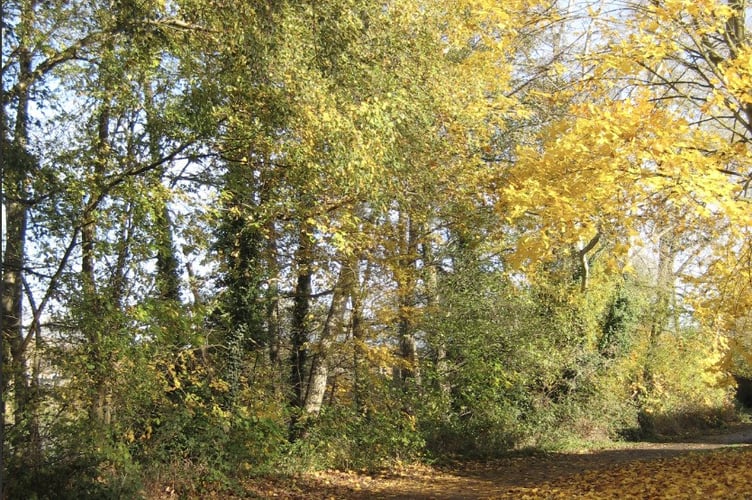
We shouldn’t be too sad here in Britain’s leafiest county as summer gives way to autumn, when trees show off their spectacular colour displays. We can also experience the musky odours when leaves drop and perhaps family autumn walks among the leaves, of their crunch underfoot and alternately piling them up and kicking them down.
Last week we explained why the leaves of deciduous trees change colour in autumn and why there are different colours. But that’s only part of the story because, of course, they go on to shed their leaves – why?
Just as for colour changes, it’s down to the hormones controlling its metabolism. Trees respond to shorter periods of sunlight and lower temperatures by placing themselves into a period of dormancy until spring.
When in autumn a tree stops producing chlorophyll – the chemical responsible for photosynthesis and also the pigment giving leaves their green colour – it also moves chemicals and nutrients from its leaves to twigs, trunks or roots, to be stored until spring.
The tree then produces a special tissue at the base of its leaf stalks. A slight breeze is enough to cause leaves to fall. The tree acts quickly to close the place where the leaf used to be, and forms a new waterproof tissue, protecting itself from harmful fungi or bacteria.
There are several reasons why a deciduous tree sheds its leaves.
Firstly, it doesn’t have to supply them with nutrients throughout the winter.
Secondly, with the loss of its leaves the tree can tolerate a powerful autumn or winter storm: it has a much smaller surface area to be impacted by winds, which can move through the branches more easily.
Without leaves the tree also avoids large accumulations of snow in its branches which would cause branches to break.
Leaf shedding provides a kind of “detox”, as toxins can be released via the leaves. These toxins were either absorbed from the environment or produced by chemical reactions during the growing season.
Losing its leaves also means a tree can preserve moisture in its branches and trunk, so preventing itself from dying of thirst.
During its growing periods, a tree’s leaves release water via the leaf surface, a process called transpiration. If the leaves weren’t lost they would lose water even in winter when the sun shines, but the tree would be unable to draw water from the cold or frozen ground to replace the lost water.
When spring arrives, the lack of a leaf canopy helps tree seedlings to grow by enabling more light for their growth before mature trees produce new leaves.
Most coniferous trees survive the cold seasons differently. These “evergreens” lower their metabolism but do not shed leaves (“needles”) which have a much smaller surface area and a wax layer that inhibits loss of water through transpiration.
In addition, the tiny openings through which water evaporates are narrowed in winter.
There are exceptions because some coniferous trees do shed their needles. These include the European larch, sequoia and swamp cypress.
We have only considered tree types that grow in our climate: trees in tropical areas are not subjected to cold weather, and in tropical rainforests they need no protection against droughts or winds: the dominant plants are therefore broadleaf evergreen trees.
That’s enough science for now.
This coming week, try to get out and enjoy autumn: the dusky, heavy scents, the beautiful colours and the sensation of leaves underfoot!





Comments
This article has no comments yet. Be the first to leave a comment.